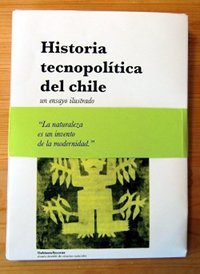RAW&FRESH. Bloging from City of Women Art Festival.
The 14th City of Women Festival opened yesterday with the performance “Morphotope” by Dutch director Sanne Van Rijn. A clever combination of improvisation, risk and humor that breaks the boundaries of theater and contemporary dance by stressing the very essence of live art: the part of the audience and the experience.
 “Morphotope” was premiered in Belgium in 2004 and, during that first period, performed in atypical venues such as a technological university hall or a church. There, Van Rijn felt that she could get rid of the rules of theater and contemporary dance performances, where the audience is comfortably hidden in the darkness of the black box. “I wanted to create a performance space cut out from reality, where the audience and the performers would be at the same level and even under the same light, so they could feel equally responsible of the situation and the magic of the evening”. That’s probably the reason why her work is often connected with the tradition of minimal art: because the audience, and not the stage, is the center of the action.
“Morphotope” was premiered in Belgium in 2004 and, during that first period, performed in atypical venues such as a technological university hall or a church. There, Van Rijn felt that she could get rid of the rules of theater and contemporary dance performances, where the audience is comfortably hidden in the darkness of the black box. “I wanted to create a performance space cut out from reality, where the audience and the performers would be at the same level and even under the same light, so they could feel equally responsible of the situation and the magic of the evening”. That’s probably the reason why her work is often connected with the tradition of minimal art: because the audience, and not the stage, is the center of the action.Yesterday the audience was definitely there. Laughing, clapping hands (“This never happened before”) and empathizing with the dancers, specially at the most humorous moments of the performance -which were quite a few. “Of course humor is present but I don’t want people to feel that they are being entertained. On the contrary, I want them to be active and self-conscious”. The viewer’s position is never a neutral not an easy one. By looking and listening, thinking and feeling, waiting and laughing, in Van Rijn’s work you are at the same time the director of the situation and its object. You are asked to review the way you usually look at things and the way you communicate with the others. Thus, “Morphotope” is also a journey into the misunderstandings of self-representation, where individual freedom appears always as the result of a negotiation. The performers are waiting for you to tell them what to do, how to move, what their actions are really all about. And they might get it or not. And we might be satisfied with it or not.
 “I was inspired by my own experience as a performer” says Van Rijn. “You are expected to stand out of the crowd but socially you have been educated to be part of it, to be invisible. For me this has always been a difficult thing. On stage, any situation is transformed into a social experience because there is an audience involved, because someone is watching”. For her it is all about this double position: the audience and the performer’s. About how to make the audience more visible and conscious of its role. The choice of Japanese dancers is not accidental. “Because they are culturally different they accentuate this double perspective. It helps you to see yourself through their eyes”.
“I was inspired by my own experience as a performer” says Van Rijn. “You are expected to stand out of the crowd but socially you have been educated to be part of it, to be invisible. For me this has always been a difficult thing. On stage, any situation is transformed into a social experience because there is an audience involved, because someone is watching”. For her it is all about this double position: the audience and the performer’s. About how to make the audience more visible and conscious of its role. The choice of Japanese dancers is not accidental. “Because they are culturally different they accentuate this double perspective. It helps you to see yourself through their eyes”.Improvisation plays a big part in it, specially in the last two thirds of the performance. Only a basic structure and a few rules are fixed and the performers have to find their own way through them. They constantly surprise each other and adapt their ideas to the situation and the reactions of the audience. It is important to keep it fresh and different every time so that the improvised dimension of the experience is not lost. “At some point, when the performers get to know each other very well, they become too clever. Even if the complicity between them is crucial, I insist on them coming back to a more insecure position, to not knowing what is going to happen next. This is the very essence of live arts: to take part in a unique experience that cannot be repeated and be able to say I was there”.
Photos: by Nada Zgank.



